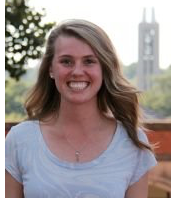By Carter Moelk
KU Statehouse Wire Service

TOPEKA – Gov. Sam Brownback has signed into law a bill that would allow underage drinkers to seek or receive emergency medical treatment without legal repercussions.
SB 133, commonly known as the Lifeline 911 bill, became law after two and half years of work by supporters both inside and outside the Capitol. College students and lawmakers collaborated to make the new law a reality.
“I am thrilled for the students,” Sen. Tom Hawk, D-Manhattan, said. Hawk, along with numerous senators, worked with student proponents to help kick-start the bill and see it through the legislature.
“I am very proud to see the bill be signed in to law,” said Reagan Kays, former Kansas State (K-State) student body president, who was a key player in drafting the legislation.
The bill began as a student initiative at K-State and was designed to mirror similar laws in other states.
“I guess you could say (the initiative) started out as an idea I borrowed from a fellow intern the summer before my senior year of college,” Kays said.
After being elected student body president in 2014, Kays spoke with his newly elected vice president, Cody Kennedy, and they decided to run with the idea.
“We spent a lot of time explaining it to people who had never heard of anything like this legislation,” Kays said.
Before their explanations, few people were familiar with the concept of immunity from criminal prosecution for minors seeking medical assistance from alcohol, but they were very open to hearing how such a measure could affect college campuses around Kansas.
“My goal was to use the position of student body president, a role recognized by many, as a way to leverage stakeholders to get behind the bill,” Kays said.
Kays and Kennedy began speaking to legislators from the Manhattan area to see if they had any interest in the idea – and they did.
“After speaking with Kays about his initial idea, I told him, ‘Let’s get together in Topeka!’” Hawk said.
Hawk helped direct Kays and other advocates to different lawmakers around the Capitol. After drafting of the bill, Kays encouraged others to promote it.
“We organized students from K-State to go to the Capitol every two weeks to advocate for the bill,” Kays said.
Momentum to support Lifeline 911 eventually grew to include campus leaders around the state. Even as recently as early February, Jessie Pringle, University of Kansas (KU) student body president, came to the Capitol’s annual “Higher Education Day,” to urge legislators to help pass the bill.
Hawk said credit for the success of the bill goes to the students.
“It’s all about the constituents pushing for the piece of legislation,” Hawk said.
Nearly three years after the journey to implement Lifeline 911 in Kansas began, students and supporters believe the new law will benefit students across the state.
“Every once in a while you hear of tragic drinking accidents at your college or one near you,” said Anna Frame, a junior at the University of Kansas. “I think legislation like this will encourage people to help each other and not fear for their legal safety.”
Hawk strongly agrees with Frame. He believes that students have previously been nervous about the consequences they would have to face if they called for medical attention for an underage drinker, especially if they were underage themselves. This bill would protect students who drink too much and those who seek help for them.
“With the way society is, people are paranoid with getting in trouble,” said Hawk.
Kays said the ultimate objective of Lifeline 911 is to serve as an incentive to help young people pick up the phone and ask for help.
“If one of your friends or acquaintances has a little too much to drink, this bill can help them get the medical attention they need,” Kays said.
Hawk agrees.
“This bill isn’t students wanting to get out of legal responsibility. . . . This is a mature move made to help people,” Hawk said.
More than 20 states have 911 lifeline legislation in place, reports Aware, Awake, Alive, an education and advocacy group in Texas. The group reports that from 1999 to 2005, 83 deaths among college students nationwide were due to underage drinking.
Edited by Maddy Mikinski
